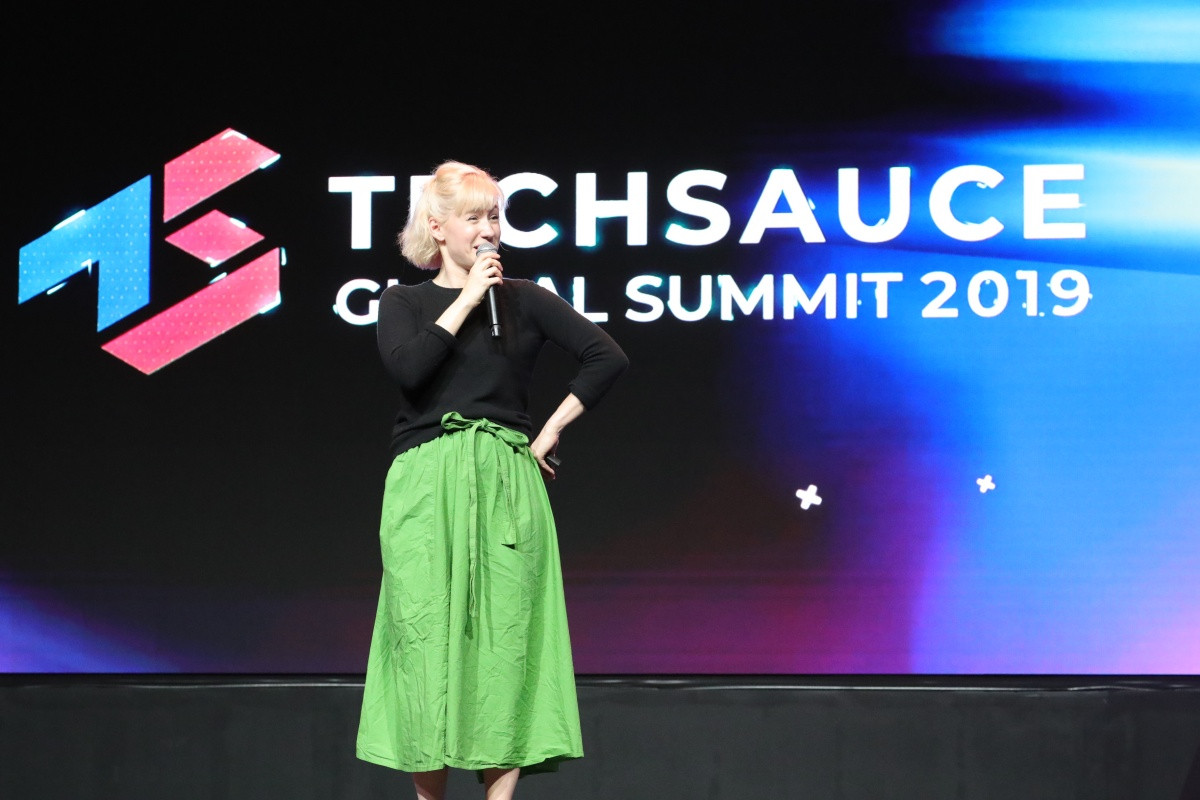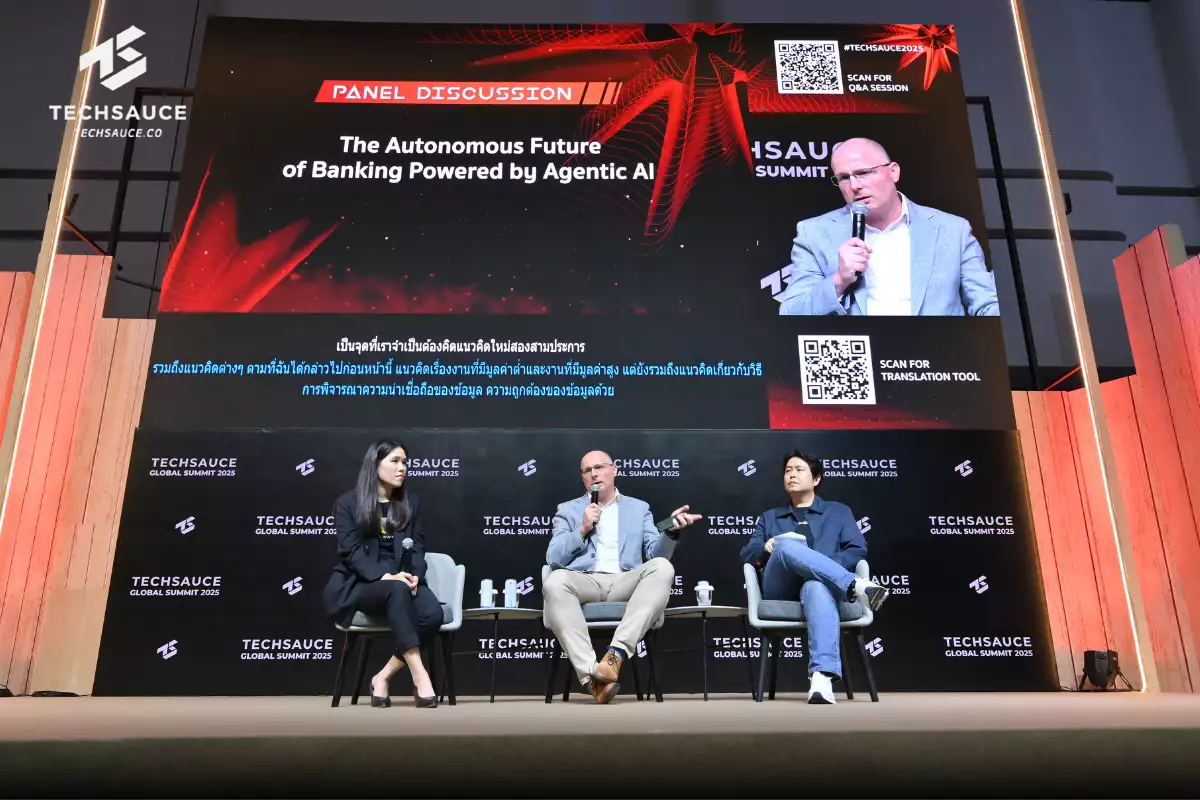Approaching Technology Through Storytelling

One Hundred Languages
Keynote addressed by Linda Liukas, programmer, storyteller, illustrator, Author and CEO of Hello Ruby Book
During the evening session of Techsauce Global Summit 2019 was a keynote addressed by Linda Liukas, one of the central figures in the world of programming whose works from education on software to AI touches on making technology much more humanely and approachable to all. Her most prominent work, Hello Ruby, a book that teaches children about technology, computing and coding with a unique blend of creative storytelling has garnered a global success with over 29 languages in publication worldwide.
The central idea she addressed during her keynote was that to prepare for a world where most problem are computer-based problem, education on technology must change in a way that is approachable and inspirable to future generations of children. Since the future is software, she pointed out the necessity in instilling the young of ideas that technology can be a wonderful career for everyone and how storytelling is the key that could make that happen.
World of Computer Science through storytelling
“If code is the new lingua franca, instead of grammar classes, we need poetry lessons”
A phrase Ms. Linda gave regarding a diverse approach toward learning coding and computer-science. Comparing coding to nuances of learning the language, she believes that the essence of learning computer science and coding is not just about practicing only by its own rules but learning how it is use; akin to learning how to sing and dance. Since Computer Science is a tool of problem-solving, children should learn how to useit like one.
Backing the fact, she pointed out A, B and C on her lessons on technology education

Firstly, Embracing Algorithm
She gave reasons why making abstract concept of algorithm approachable by everyone is important, seeing how algorithms are gradually being ingrained in our every day life, influencing our perspective of the world. Given practical examples with illustrations throughout her book from Google search engine, social networks, to YouTube search algorithms. She let children embraced the fact that algorithm is not magic but rather a human input. With an exposure to concept of computer science and step by step process of how algorithm works, children learn that programming is about making mistakes and how to solve (or debug) it collaboratively and creatively. With that, algorithm is become less scary to learn for them.
Secondly, to know that Computer are made of Logic – not magic.
There has been no way of explaining how computer works – until now. She mentioned in Hello Ruby book, children are taken on a deep journey inside a computer where they learned and gained a robust experience from the origins of how the computer came to be, the logic of one thing leading to the other and their application today. The implication allows the children to see computer as something magical but at the same time know that they are a product of logical. This further allow them to Technology is about imagination.

Thirdly, C is for Creativity for computers
As society relies more on automation, she refers to how important in how we should prime our data to feed it to AI and machine learning system, for it to be efficient and unbiased. The earlier that people from all ages and backgrounds can engaged in this stage of the process is what will make the AI better overall. Having practiced this with children, she let children practiced through inputting description of cats to unicorns and recognizing biased in the computer.
Also, she made another point on teaching the future generation of what differentiates human from machine; the good, bad.Having mentioned that while technology grows and impact us, it should not replace our humane aspects as there some decisions that only human can make and that machine cannot reciprocate.

She also expressed her concerns on how technology-relatedvocabularies and metaphors should be updated to keep up with the influxes of new technology innuendos, terminologies, and buzzword - like Algorithms for one. She illustrated this through the research of how children know more of Pokémon names rather than names of tree around them. She emphasized that there should always be word to express what is around us and stressed that for technology to be approachable, it should always be describable.
Lastly, she left a remark on the challenges of teaching technology that curriculum toward how both hardware and software should not be separated but integrated at the same time. She also opened towards how pedagogies and curriculums should change in the way that let children aspire to learn and imagine the limitless potential of technology.
This article is written by Piriyapong Nhuthep, editor of Techsauce Global Summit 2019.
ลงทะเบียนเข้าสู่ระบบ เพื่ออ่านบทความฟรีไม่จำกัด






